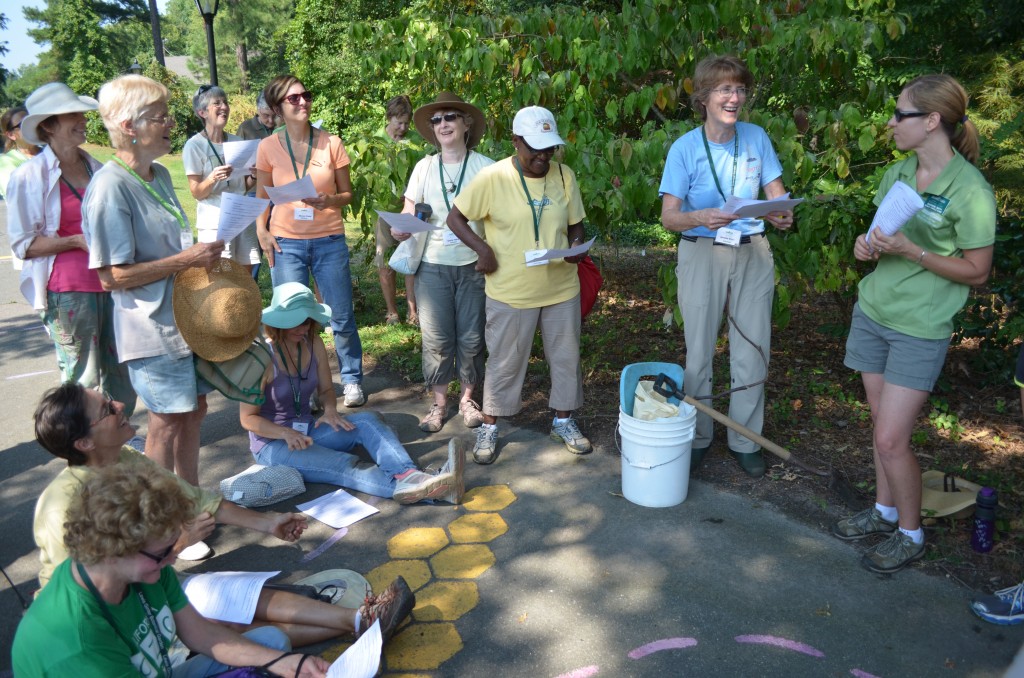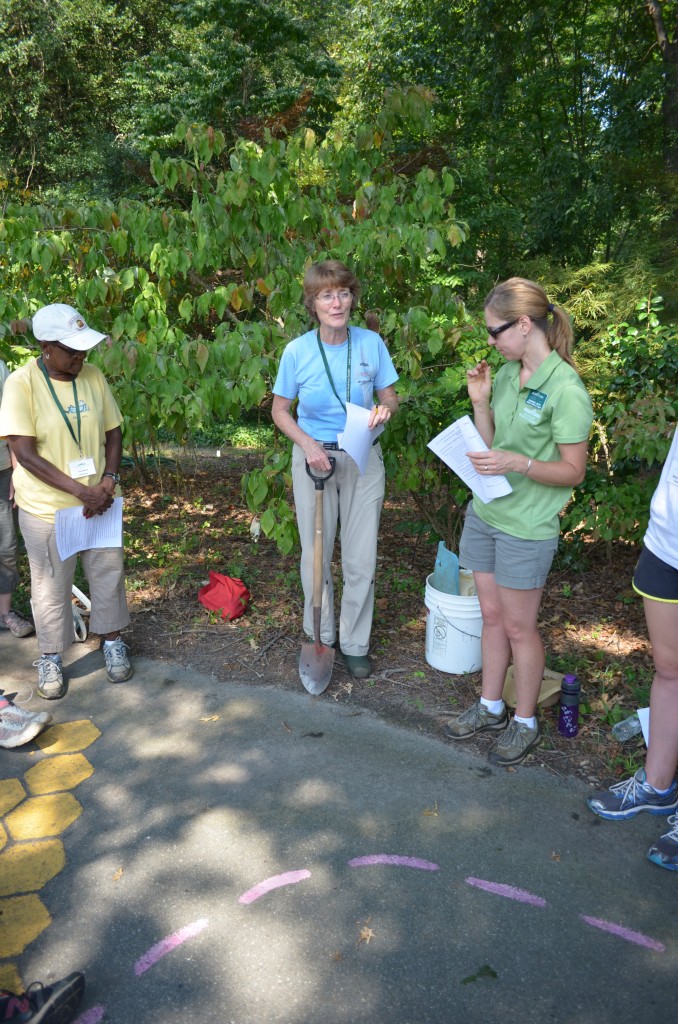Fall Gardening Tips: Raking, Mulching & Planting While Going Easy on Your Body
by Jonah Holland, PR & Marketing Coordinator, Lewis Ginter Botanical Garden

Annette Ernst, Occupational Therapist & Garden Volunteer, engaging the staff and volunteers with a few jokes as she gave us gardening tips.
We have a wealth of knowledge at the Garden! And boy do we like to share it. Our mission, after all is education. One way that we share our knowledge is by teaching staff and Garden volunteers about interesting Garden-related topics in a series called “15 Minutes in the Garden.” I’m always learning something new working at the Garden! Last week, Annette Ernst, occupational therapist & Garden volunteer, gave us some best practices for how to do our fall gardening with minimal stress to your body. She started out by reminding us first and foremost that at all times you should follow the advice of your doctor or health care professional, she is not a doctor, these are just some tips that might help you avoid injury. Here are some of her other great tips:
Tips for Starting the day
o Use good posture – Morning stiffness leads to strained muscles
o Sleeping posture can affect morning posture. Try sleeping on your back
o Limber up with movement more than stretching
o Move before activity as a warm up
o Activities of Daily Living (ADL) are a perfect way to limber up — showering (warmth is good), making the bed, dressing, putting on shoes and socks while sitting on the floor, starting the laundry, walking the dog, and going up/down stairs can all help you get ready for your garden work.
o Time of Day – Do your hardest job at your best time of the day. Probably mid-morning or mid-afternoon is best for more strenuous jobs.
o Repetitive movements can lead to problems — for example, Carpal Tunnel Syndrome, pitcher’s arm, dancer’s foot
o Change up what you do, for example if you always rake with your right arm, try switching to your left.
o Slow and steady wins the race. Pace yourself
o Watch for fatigue and dehydration – know the signs, watch for poor coordination, visual problems, feeling dizzy, more confused than usual. Rest, hydrate, eat energy foods
Some Active Movement Before Gardening is Good and Helps with Range of Motion (ROM)

Use the size tool that’s appropriate for the job. Sometimes you can get away with using a smaller (and lighter) tool, like this mini-shovel.
o Trunk-side flexion, forward flexion, backwards extension, rotation
o Shoulder-shrugs, scapular rotation, depression
o Arm-reaching forward, pulling shoulders back, reaching sideways, reaching behind head, reaching to waist
o Elbow bending hands to shoulders, hands to knees
o Forearm – palms up, palms down movements
o Wrist and fingers –wrist back with fingers fisted, wrist down with fingers stretch out
o Legs — try marching in place, lunging forward, rocking from toes to heels, squats on toes
Tips for Raking
o Don’t overreach
o Change sides
o Work in small patches (Don’t rake the same leaf across the yard)
o Mulching – use proper size and proper weight tools (for example forks are lighter than shovels)
o Keep back straight
o Bend knees
o Work close to body
o Lift less than you think you can
o Stop before you think you should
Tips for Planting
o Use the right size tool (can you get the job done with a mini-shovel?)
o Work close to body
o Work all the way around the plant if digging up
o Change up sides when digging
o Use a lever if necessary for larger jobs. For example use a rock under the neck of your shovel for leverage.
o Using a fork will give you more plant and less dirt (which is lighter)
o For a small job – sit to work
o If kneeling — don’t over reach
o Don’t twist or jerk
o Watch your knees — don’t overstep forwards or sideways
o Cool down after gardening, choose from same movements as before gardening
o Do a slow easy stretch in the opposite direction from your gardening tasks
o Break time – be sure to take breaks for rest, snacking and hydrating.